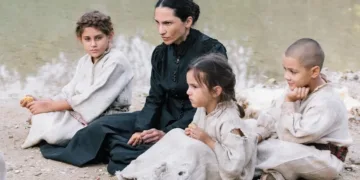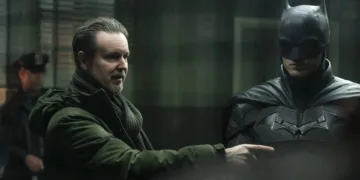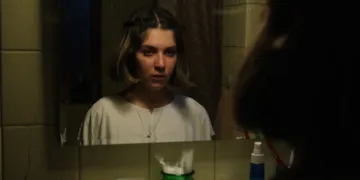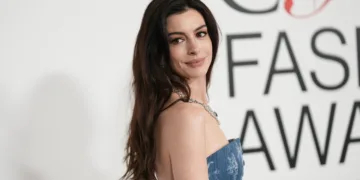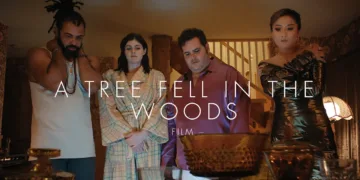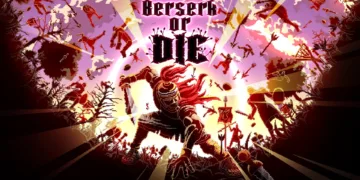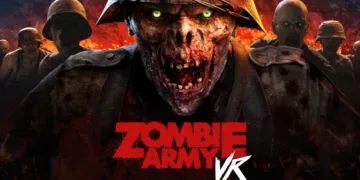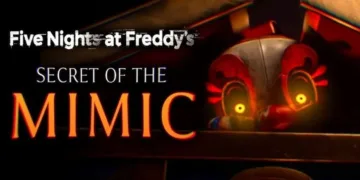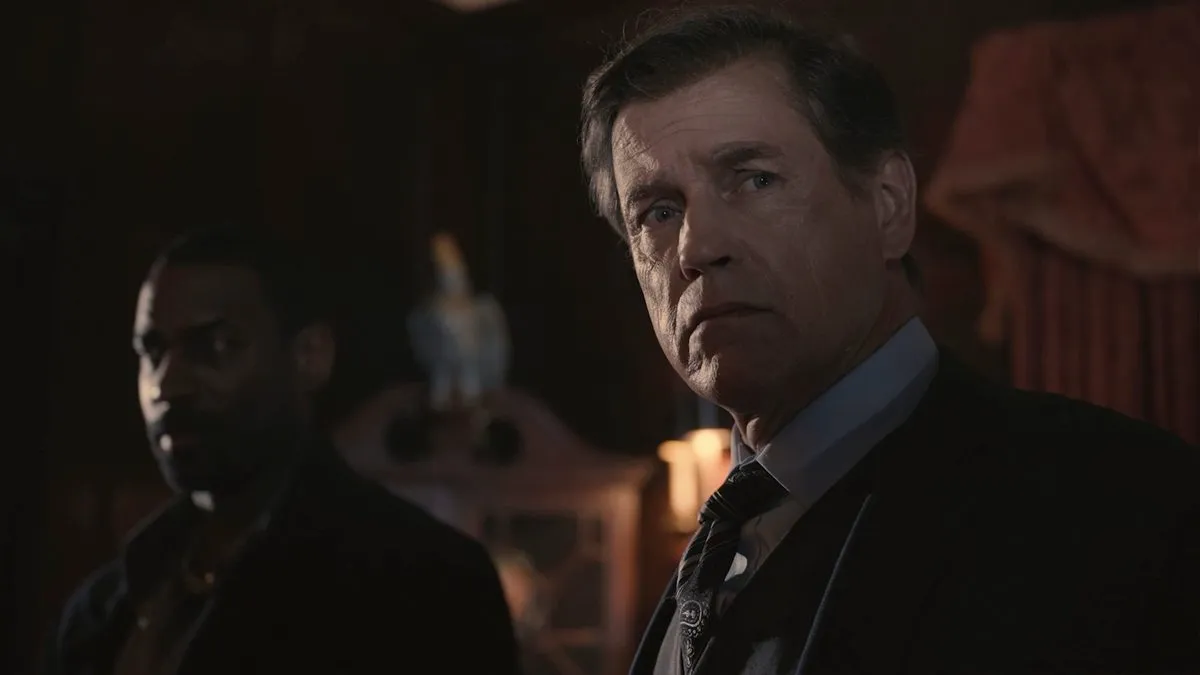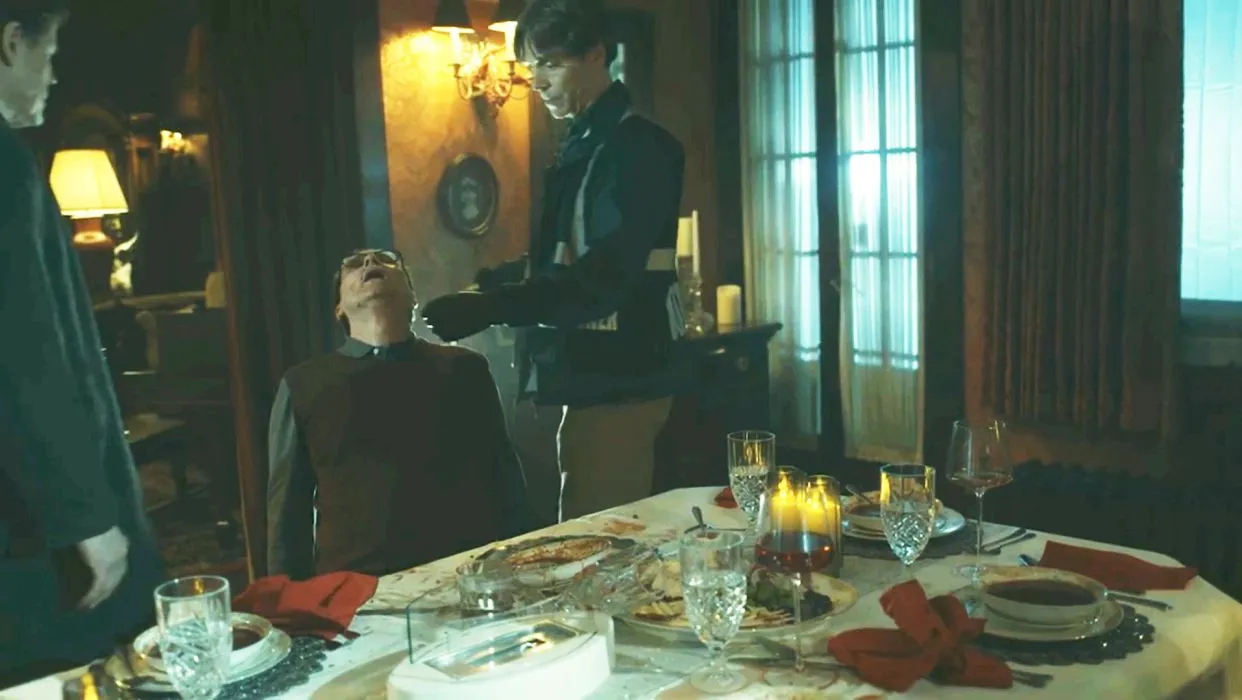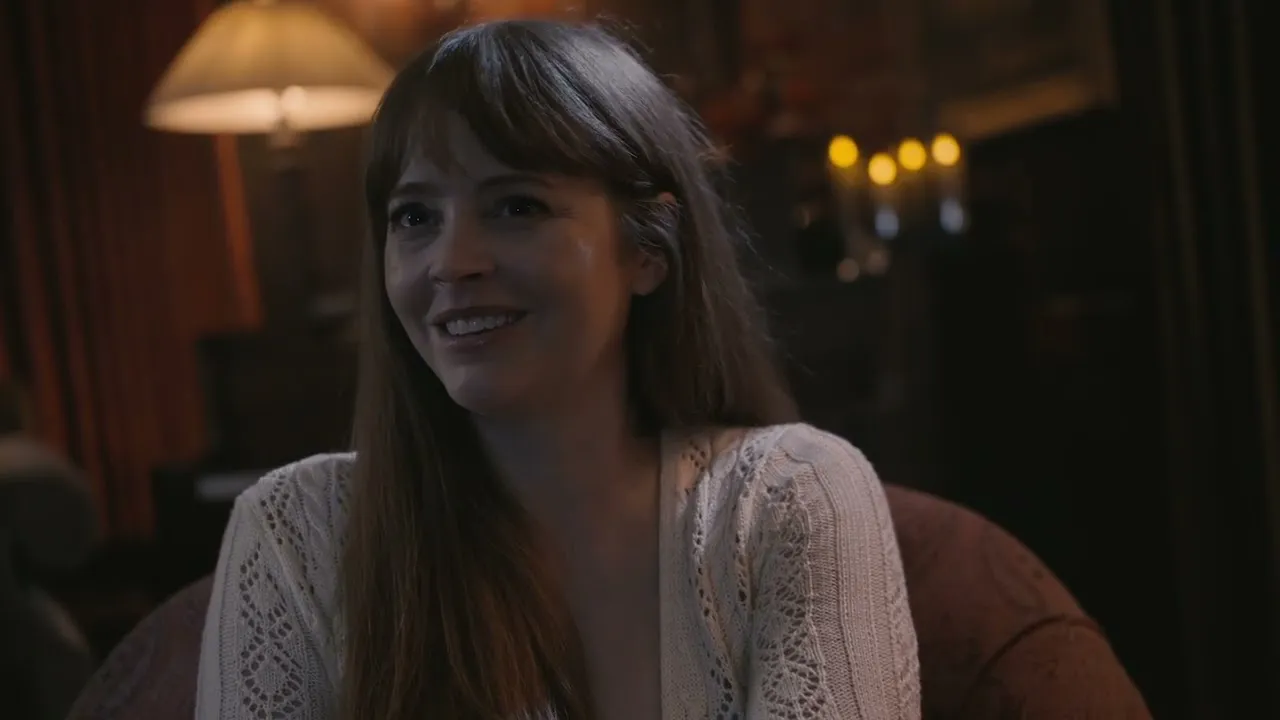At its core, Death 4 Dinner presents itself as a modern take on the classic murder‑mystery whodunit, tinged with dry humor. Directed by Lana Read and released in 2025, the film nods to fan favorites like Knives Out and Agatha Christie adaptations, yet carves its own niche through a tightly wound puzzle and tongue‑in‑cheek dialogue.
The action unfolds in a grand, storm‑shattered manor where Senator Andrew Rutherford collapses mid‑meal, revealing cyanide‑laced soup as the culprit. Trapped by weather and suspicion, the household’s guests quickly shift from mourners to suspects. Read’s screenplay lays out each narrative piece with precision, ensuring that every whispered confession or revealing glance deepens the mystery.
Leading the inquiry, Michael Paré embodies Detective Noah Rafferty with a measured, Columbo‑style persistence, while Wendell Kinney’s Detective Isaiah Baker provides a lively counterpoint as the eager newcomer. Among the ensemble, Erik Fellows’s vulnerable turn as Taylor Rutherford and the quietly watchful Penny Church (the housekeeper) stand out, each performance lending depth to motives that feel both familiar and fresh.
Plot Mechanics and Narrative Flow
The film wastes no time plunging us into its puzzle: torrential rain, battered gates, and the arrival of Detectives Rafferty and Baker at a sprawling manor. Almost instantly, Senator Rutherford collapses, soup dribbling from his lips. A quick examination reveals cyanide—an elegant nod to classic poison‑at‑the‑table mysteries—and the enclosing storm cuts off any hope of outside help. This setup respects genre conventions yet feels brisk, setting stakes before polite introductions even finish.
As bodies multiply, the screenplay paces itself with purpose. Each new death—whether a careless knock by candlelight or an off‑hand slip over a spilled wine glass—ratches tension higher. There’s a satisfying rhythm: accusation, partial reveal, another fall. The sequence never drags; seconds stretch in shadowy corridors, then snap back when a scream shatters the hush. The storm, almost a character itself, presses the ensemble into tighter quarters, heightening suspicion.
Rafferty’s approach channels a vintage detective: he methodically circles suspects, prodding weak alibis with polite insistence. Baker counters with enthusiasm, willing to push theories Rafferty dismisses as fanciful. Their interplay fuels the investigation beats—Rafferty’s patient deconstruction of a claim against Baker’s instinctive leaps. Together they tease out hidden grudges among the Rutherford heirs and the housekeeper, each revelation landing like a chess move.
False leads pepper the dialogue: a will discovered in a secret drawer, a mirrored alibi in the conservatory. At key moments, Read’s script pauses just long enough for you to rethink what you thought you knew. And then comes the signature “just one more thing” reversal—though here it arrives without fanfare, undercutting predictability.
When the true killer emerges, the film ties its numerous threads neatly. Clues scattered across the dinner table—the choice of soup, a slightly misplaced candlestick—snap into place. In the final confrontation, character motives and forensic details fuse, delivering both poetic justice and a reminder that every seemingly trivial moment had its purpose.
Character Dynamics and Performances
Detective Noah Rafferty, as portrayed by Michael Paré, carries the film on a bedrock of world‑weariness and sharp intuition. He moves through the manor’s darkened halls like a chess master, sizing up each guest’s next move. Paré’s portrayal rarely raises his voice, relying instead on a half‑smile or a raised eyebrow to register skepticism.
There’s a familiarity to his cadence—echoes of classic screen detectives—yet he sidesteps outright mimicry, breathing life into Rafferty’s quiet confidence. His scenes crackle when he locks eyes with a suspect, and those moments underscore how much trust the film places in his steady presence.
Opposite him, Wendell Kinney’s Detective Isaiah Baker offers an energetic foil. Baker’s eagerness to prove himself sharpens every interrogation beat; he barrels into lines of questioning that Rafferty later refines. Kinney captures that jittery edge without tipping into caricature. Their back‑and‑forth yields an organic rhythm—Rafferty’s calm corrections balance Baker’s off‑the‑cuff instincts, lending each revelation both credibility and an undercurrent of wry humor.
Among the Rutherford heirs, Erik Fellows stands out as Taylor Rutherford, whose raw vulnerability bursts through in a startling bathroom scene. Fellows trusts the camera to linger on subtle flinches and trembling hands, reminding us that grief can be just as lethal as poison. The other siblings orbit this emotional core with varying degrees of flamboyance and secrecy: a socialite whose flashy attire betrays a brittle self‑confidence, a recluse whose avoidance of eye contact feels more calculated than shy.
Then there’s Penny Church, the housekeeper, whose nurturing façade slips only in fleeting micro‑expressions. The contrast between her gentle tones and the glint in her eye amplifies every twist she witnesses. As the body count rises, ensemble scenes sharpen into a tense dance: glances exchanged over half‑empty glasses, sudden sighs that ripple through the room.
Together, this cast balances satire and sincerity. When a suspect stumbles over an alibi, laughter bubbles up—but it never undercuts the danger that lingers in every portrait‑perfect corner of the manor. These performances anchor the story, ensuring that even familiar tropes feel charged with fresh possibility.
Script and Steering: The Mechanics Behind the Mystery
The screenplay smartly balances sharp quips with occasional rough edges. Dialogue crackles when Rafferty and Baker spar—each line revealing character while forwarding the plot. Yet some exchanges feel overly expository, pausing the tension to explain clues the audience has already spotted.
The film leans on classic devices—a howling storm, locked gates, a dinner table strewn with suspects—but spices them with punchy one‑liners and self‑aware commentary. Red herrings arrive at a steady clip: a hidden will here, a hastily wiped smudge there. When the final reveal lands, it feels earned, thanks to carefully scattered details, though the pacing around the midpoint momentarily loses its grip on suspense.
Director Lana Read displays a keen sense of tone, flipping between genuine chills and outright silliness without stalling the engine. She resists pinning the story to a specific era—no smartphones, no dated fashions—granting the mystery a timeless air. Scene transitions are crisp: a thunderclap to cut from one interrogation to the next, a flicker of candlelight to shift focus. Read’s choices maintain momentum; even quieter character moments carry an undercurrent of threat.
There’s an affectionate nod to vintage TV whodunits throughout: the film frames suspects in wide shots reminiscent of ’70s anthologies, and it mirrors Agatha Christie’s signature reveal in the drawing room. Yet it sidesteps parody, letting characters feel real rather than caricatured. By weaving these homages into a fresh narrative engine, Read demonstrates that classic storytelling tools can still surprise when wielded with confidence.
Technical Craft: Visuals and Sound
Cinematography in Death 4 Dinner leans into the storm’s claustrophobia. Hallways curl into deep shadows, forcing viewers to lean forward as if searching each corner for hidden threats. Candlelit dinner scenes glow with warm color, yet the flickering flame betrays sudden dread. During interrogations, Read and her director of photography alternate tight close‑ups—capturing every twitch of an eye—with wide shots that remind us how small each suspect appears under the manor’s vaulted ceilings. These shifts keep our gaze mobile, mirroring Rafferty’s own scanning of faces for truth.
Production design and costuming work hand in glove to sketch character without an expository line. The manor feels lived‑in yet slightly off—dusty heirlooms perched on gleaming surfaces, heavy drapes that swallow sound between rooms. It’s the sort of space where secrets feel embedded in the wallpaper. Costume choices reinforce this texture: Rafferty’s muted trench coat and Baker’s rumpled jacket signal years of wear and inexperience, respectively. The siblings arrive in evening wear that reads like a personality test—Taylor’s disheveled shirt betrays emotional unraveling, while the socialite’s midnight‑blue gown shines with calculated bravado.
Musical flourishes underscore the film’s oscillation between dread and cheek. Orchestral swells rise at each new death, then give way to a sly saxophone riff when the script winks at its own absurdity. Storm sound effects hammer at windows, reminding us that even the house’s sturdy walls feel vulnerable. At times, audio mixing falters—cutlery clicks too loudly, dialogue dips into muddled ranges—yet those glitches rarely pull us out. More often, a soft crescendo or a distant thunderclap will nudge our pulse, ensuring we never fully forget there’s a killer among them.
Themes, Tone, and the Whodunit Renaissance
Beneath its periodic chuckles and shocking deaths, Death 4 Dinner hinges on two central tensions: the corrosive pull of inheritance and the fragile line between trust and betrayal. As each heir reveals a private grudge, the film examines how wealth can fracture even the closest bonds. Meanwhile, every whispered confidence begs the question: whose sympathy masks a darker motive?
The script threads genuine suspense through moments of wry humor. A sudden blackout prompts startled gasps, only to segue into a character’s dry one‑liner about ruined hair. The film delights in its own tropes—a storm‑lash setting, a locked room—and gives them a knowing nod before pressing forward. That self‑awareness keeps the tension from tipping into melodrama.
This mystery arrives amid a broader surge of clever, puzzle‑driven storytelling on screen. It neither hides its lineage nor leans too heavily on it. Fans raised on classic manor‑house tales will recognize the beats, but the film’s brisk wit and slightly warped edge give it a fresh spin. It appeals equally to viewers who relish piecing together clues and those who enjoy watching characters bicker in stylized peril.
The movie extends a clear invitation: pay attention to every detail—an idle remark here, a prop placed just so—and you’ll feel rewarded when all the pieces click into place. That moment of revelation carries genuine payoff, a reminder that in a well‑built mystery, every line and glance matters.
Final Verdict
Michael Paré’s steadfast Rafferty and Kinney’s energetic Baker form a compelling investigative pair, while Erik Fellows and the ensemble inject emotional depth and levity. The film’s twist structure rewards close attention, and Read’s production design immerses us in storm‑tossed isolation.
Occasional script clunks and a couple of rough sound edits don’t derail the overall momentum. Its self‑aware humor keeps the tension from tipping into camp, ensuring each revelation lands with impact.
Mystery aficionados and dark‑comedy fans alike will appreciate the tight plotting and sharp interplay. This film serves up a satisfying blend of suspense and wit. 3.5 out of 5 stars.
Full Credits
Director: Lana Read
Writers: Lana Read, Brian Dobbins, Philip Adrian Booth
Producers: Lana Read
Cast: Michael Paré (Detective Noah Rafferty), Wendell Kinney (Detective Isaiah Baker), John Savage (Robert Rutherford), Cyril O’Reilly (Andrew Rutherford), Jessica Dawn Willis (Penny Church), Erik Fellows (Taylor Rutherford), Annie Gill (Katrina Rutherford), Carly Wheeler (August Spaulding), James A. Pierce III (Dale Spaulding), Helen Stevens-Gleason (Helen Rutherford), Kristin Lorenz (Juliette Giordano), Chris Alfrey (Outside Officer #1), Nick Banks (EMT #2), Hope Combs (Teenage Corpse), Eric Crank (Chuckling Officer), Becki Davis (Nurse Becki), David Fallang (Mr. Lockwood), Kirstin Fallang (Persistent Reporter), Scarlett Fallang (Little Penny Church), Mallory Hicks (Hospital Administrator)
Director of Photography (Cinematographer): Philip Adrian Booth
Editor: Philip Adrian Booth
Composer: Christopher Saint Booth
The Review
Death 4 Dinner
Death 4 Dinner offers a sprightly, well‑constructed whodunit that marries genuine suspense with off‑beat humor. Michael Paré’s steady presence anchors the mystery, while Erik Fellows and the supporting cast inject emotional depth. Lana Read’s direction and the production design pay homage to classic manor‑house thrills without feeling stale. Though the pacing stumbles over an uneven exchange or two, the final reveal delivers satisfying payoff for attentive viewers.
PROS
- Strong lead performances anchoring the mystery
- Cleverly paced twists that reward close attention
- Atmosphere of storm‑locked isolation feels immersive
- Balanced blend of dark humor and genuine suspense
- Production design and costumes enrich character details
CONS
- Occasional moments of clunky exposition
- Sound mixing lapses distract in key scenes
- Midpoint pacing occasionally loses momentum
- Some familiar whodunit tropes feel overused
- Minor characters lack deeper development













